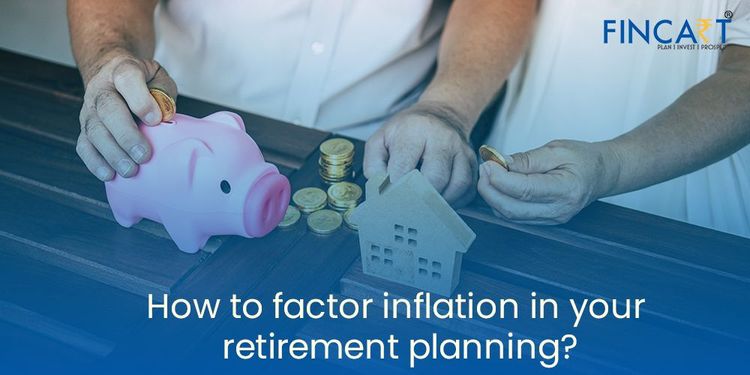Table of Contents
ToggleDo you remember the time when our grandparents used to say, “humare time pe to ye toh cheez itni saste mei milti thi” “a sack of 20kg rice used to come at today’s 1kg price”?
Gone are the days when the price of commodities was this low. As India advanced so did the demand & so did the prices. The petrol rate hike, rise in transportation cost, groceries, etc.,
This, in simpler terms, is known as inflation or as it is famously known the ‘Silent killer’.
In this blog, we’ll talk about how you could factor in the inflation rate for your retirement years.
What is inflation?
Inflation means, the cost of living increases or decreases in the value of the currency. No arena is safe from the effects of inflation. Every sector of the economy is affected by inflation. In other words, when inflation hits the purchasing power of the money decreases, and this ends ups adding extra expense to your cost of living.
Let’s understand this with an example:
Now consider that adding your rent expense, groceries, fuel, etc, adds up to 2,00,000rs on a yearly basis. Now let’s assume a consistent inflation rate of 6% for this, next year you will need 2,12,000rs. This will increase to 2,24,720 next year. Thus, it keeps on increasing every year. Till the time of retirement, this expenditure will go beyond the expected amount.
This is how the functioning of an inflation rate goes up for long-term goals like retirement planning.
How do factor inflation in your retirement planning?
Earlier there were times when FD or Fixed deposits were a great hit. But today, considering inflation is the worst option as it provides low returns.
When it comes to financial planning one should make sure to factor in the inflation cost when going for long-term financial goals, like retirement planning. Since the value of money decreases every time leading to a rise in our expenses/cost of living.
Secondly, retirement being the longest financial goal to achieve, the next 25-30 years, the expenses by that time will be way higher than expected considering inflation. It is very important to factor the inflation rate approximately while planning for your retirement & calculating your retirement corpus.
Thus, it would not be good if inflation is not considered in the retirement saving plans. Now let’s talk in numbers, like what expenses would you need today and what you’ll need tomorrow:
For example, you are 30 years old with an annual expense of 6,00,000rs. Thus, 25 years are left for you to retire and by the next 30 years, you’ll need your retirement corpus. For these 25 years, your money will grow at the rate of 12%. And after retirement, it will grow at the rate of 8.5%. Thus, as per this, you will end up needing a retirement corpus of Rs. 5,56,28,843. Considering this retirement corpus you will need to start a SIP of Rs. 32,679.
This may look like a big task today but again nothing is impossible. There are ways you can get close to this target! It’s better to start early with your investments with a SIP. Not only this, but every year try to step up from your investments to be closer to your retirement planning.
Retirement planning is one of the most certain goals of your life and most important too. Use our retirement planner calculator to project your savings, investments, and retirement goals.
Start an SIP as early as possible with the guidance of an investment advisor to achieve your retirement goals and fulfill your post-retirement dreams. In the above example, you started a SIP during your 30s. But if the investment was started at the age of 25 years the SIP amount would have been reduced by the age you retire at 60 you could achieve 10 crores corpus by investing 15,000 per month.
Your retirement is your precious time, live on your terms and the way you wish to without having to worry about where the money is going to come from. Invest




